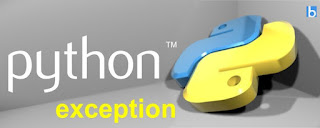Range() generates lists containing
arithmetic progression.
Three variations of range() function
>> range(stop) – Starts from 0
till (stop – 1)
>> range(start,stop) – Ends at
(stop – 1)
>> range(start,stop,step) –
Step cannot be 0, default is 1
Example of Range Function
range(stop) - If the range is defined as 5, it would simply show the
list of numbers falling in the range from 0 to 5. The default range starts from
0 and stops before 5, as defined.
range(start, stop) –
The point of starting as well as
stopping is defined in this. As shown in the example below, the start range has
been defined as 5, while stop range as 10. Hence, it would display the numbers
5, 6, 7, 8, 9, which range between 5 to 10.
range(start, stop,
step) - The first two values defined here are
the same, start and stop, while the third one is step, which means the
difference between every two consecutive numbers. For example, if range is
defined in this way: range(0, 10, 2). It will give away numbers between 0 to
10, but with a difference of 2, in this way: [0, 2, 4, 6, 8]. The step here
cannot be given 0 value. It has to be 1 or greater than 1.
Sequences in Python
A sequence is the
succession of values bound together by a container that reflects their type.
Almost every stream that we put in Python is a sequence.
Types of Sequences
- Lists
- Tuples
- Xrange
- String
The python is supported
by some other sequences are strings, lists, tuples and Xrange objects. Python has
a bevy of methods and formatting operations that can perform.
List
- A list is a sort of container which holds the number of other objects, in
a given order.
- The list type implements the
sequence protocol which allows adding and removing objects from the
sequence.
- It is an ordered set of
elements enclosed in square brackets.
Simple definition of list – li = []
li = list() # empty list
li = list(sequence)
li = list(expression for variable in sequence)
‘example’
>>> list(a)
[‘e’, ‘x’, ‘a’, ‘m’, ‘p’,
‘l’, ‘e’]
>>> list3 = [‘Hadoop’,
‘Python’, ‘Data Science’, ‘Pig’, ‘hive’]
>>> list3
[‘Hadoop’, ‘Python’, ‘Data
Science’, ‘Pig’, ‘hive’]
>>> list3[2:]
[‘Data Science’, ‘Pig’, ‘hive’]
>>> list3[2:3]
[‘Data Science’]
>>> list3[2:4]
[‘Data Science’, ‘Pig’]
>>> list3[2:5]
[‘Data Science’, ‘Pig’, ‘hive’]
>>>
Accessing List Elements
To access the
elements of a list:
n = len(li)
item = li[index] #Indexing
slice = li[start:stop] #Slicing
List Indexing
list[i] returns the
value at index i, where i is an integer. A negative index accesses elements
from the end of the list counting backwards. The last element of any non-empty
list is always li[-1]. Python raises an IndexError exception, if the index is
outside the list.
Accessing Command Line Arguments
Python supports the creation of programs that would run on the
command line, completely with command-line
arguments. It provides getopt modules that parse the command line
options and arguments. The Python sys module provides access to any of the
command-line arguments via sys.argv. It solves two purposes:
- sys.argv is the
list of command line arguments
- len(sys.argv) is
the number of command line arguments that are in the command line
- sys.argv[0] is the
program, i.e. script name
Executing Python
The python should be executed in the following
$python Commands.py inp1, inp2 inp3
Example
import sys
print ‘Number of arguments:’, len (sys.argv), ‘arguments.’
print ‘Argument List:’, str(sys.argv)
It will produce the following output:
Number of arguments: 4 arguments.
Argument List: [‘sample.py’, ‘inp1’, ‘inp2’, ‘inp3’]
If you have any
queries? Mention them in the comments section and we will clarify you.






















